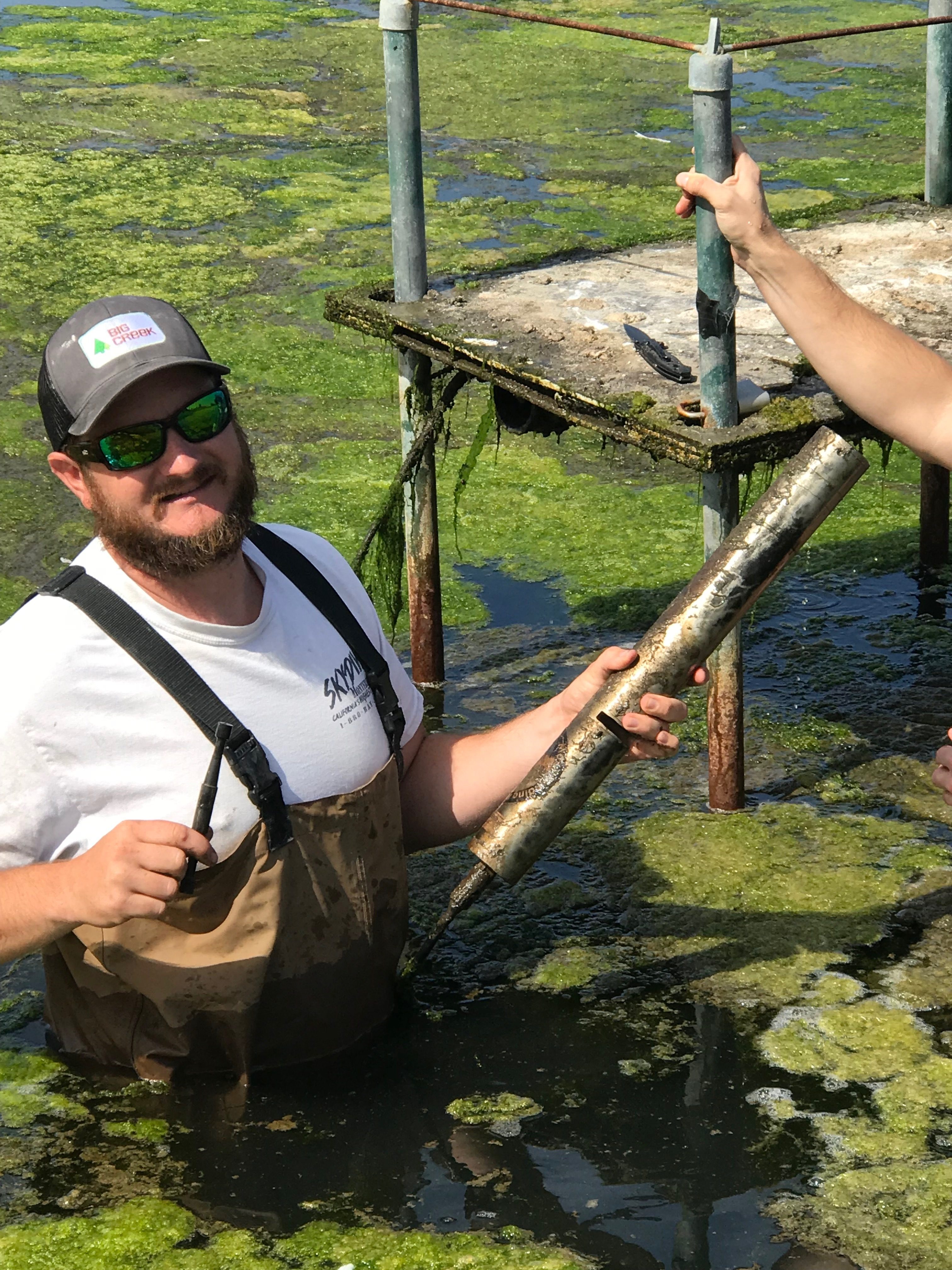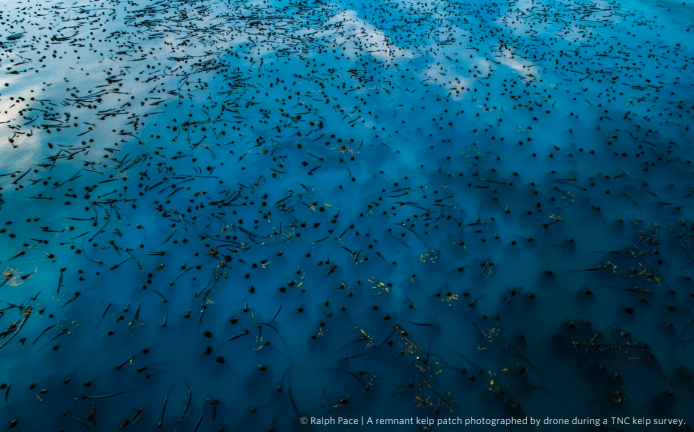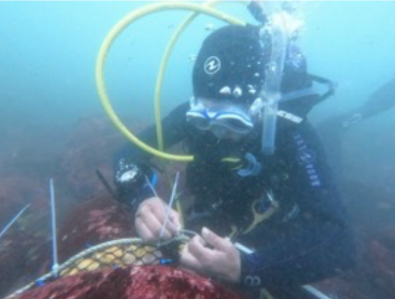HABITAT RESTORATION
Seagrass Restoration Project
University of California, Santa Cruz
Without seagrass, we would lose a fifth of our fisheries.1 Eelgrass is a species of seagrass that along with coastal kelp are threatened by human activity and climate change. Scientists estimate that kelp and seagrasses2:
• capture 83 million metric tons of carbon per year;
• one square meter of seagrass can generate 10 liters of oxygen each day; and
• one acre of healthy seagrass can sustain 40,000 fish and tens of millions of small invertebrates
• counter ocean acidification and nitrification.
Learn how to restore seagrass using the garden staple method by checking out our handbook and instructional video.
Read more
We supported a high impact remediation effort for eelgrass restoration that achieved the following:
• Restored eelgrass populations to pre-disturbance conditions of the 1930s. Grew 8,500% in 3 years.
• Measured the effect of eelgrass beds on biodiversity, adding to the growing body of research.
• Enhanced knowledge on increasing the success rates of eelgrass remediation. Eelgrass restoration is more successful with the presence of sea otters, and when it is planted in the right conditions, with light availability and current flow.
• Final results here and handbook here.
• Published paper here.
• Sonoma State University is currently producing tutorials on seagrass restoration so that their success can be replicated.
1 http://www.anthropocenemagazine.org/2018/05/without-seagrass-wed-lose-one-fifth-of-our-biggest-fisheries/
2 http://www.alertdiver.com/Leaves-of-grass

Moro Cojo Nutrient Monitoring Project
Central Coast Wetlands Group
The Central Coast Wetlands Group (CCWG) is an affiliate research group at Moss Landing Marine Laboratories (MLML) focused on the study, preservation, and restoration of Central Coast Wetlands. Dr. Kim Null, a water quality researcher at MLML, has been working with CCWG constructing models of nutrient sources to Moro Cojo Slough, a subwatershed of Elkhorn Slough. Dr. Null identified hotspots where nutrients enter the estuary and proposed that these sites should be constantly monitored to establish a nitrogen load baseline, validate models, and verify nutrient reductions due to mitigation efforts.
Read more
With funding from Anthrocean the CCWG has built a continuous monitoring platform that monitors nitrate, dissolved oxygen, temperature, salinity, chlorophyll, and pH in real time. Before the Anthrocean funding, data was gathered through grab samples, providing only a snapshot of nutrient concentrations at a specific point in time. Now, the data is continuously collected providing a high resolution of water quality parameters and nitrate loads. The data and platform designs are open to the public and workshops will be held in the near future. With this high resolution dataset, future remediation efforts such as bioreactors and wetland installations, will be detectable with a high degree of certainty.
See the Final Report and Presentation.
Accelerating Ocean Recovery with Regenerative Aquaculture
The Nature Conservancy
The Nature Conservancy (TNC) is working in California to accelerate the pace and scale of kelp restoration by advancing ambitious policy solutions, eliminating regulatory barriers, demonstrating innovative kelp farming practices, and securing public-sector investment to support large-scale regenerative aquaculture operations. Anthrocean supported the launch of TNC’s bull kelp farm and ongoing work to catalyze science-based state policy and investments for kelp forest restoration.
Photo credit: Copyright Ralph Pace – A remnant kelp patch photographed by drone during a TNC kelp survey.


Kelp Forest Restoration Along the Oregon Coast
Reef Check Foundation / Sonoma State University
California’s north coast and Oregon’s southern coastal region form a continuous ecosystem across state boundaries. This system has recently been devastated by near wholesale declines in bull kelp (Nereocystis luetkeana). Sonoma State University and Reef Check collaborated on this project to carry out pre-restoration kelp monitoring efforts along the Oregon Coast and develop a restoration plan to test the efficacy of two restoration techniques: urchin removal and kelp outplanting.
Photo credit: Brent Hughes, Ph.D.
Adding Resilience to Kelp Forests
UC Davis Bodega Marine Lab / Sonoma State University
Over the last decade kelp forests in temperate seas have suffered declines, and nowhere have these declines been more prevalent than in northern California (> 90% total decline in area), where increased ocean temperatures have likely pushed bull kelp (Nereocystis luetkeana) to their physiologic limitations. This has mobilized scientists, managers, and conservationists to develop research aimed at informing restoration of kelp forests, which to date, has lacked scientific capacity compared to other ecosystems, such as seagrasses, salt marshes and coral reefs. This project with Sonoma State was one of the first projects in California to address kelp forest loss and restoration, by investigating the population-level capacity of bull kelp restoration in face of ocean warming. The goal of this study was to determine if subpopulations of bull kelp that are adapted to warmer waters could be used for restoration of populations that are less heat tolerant. This work is ongoing.
Native Oyster Restoration
Elkhorn Slough National Estuarine Research Reserve
Anthrocean also supported aquaculture and restoration of native Olympia oysters in the Elkhorn Slough by Prof. Kerstin Wasson, since they had failed to reproduce. The final report can be found here. The publication can be found here.
Read more

